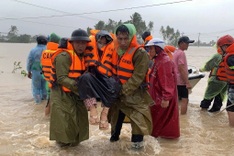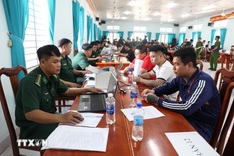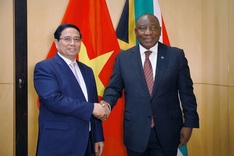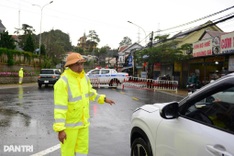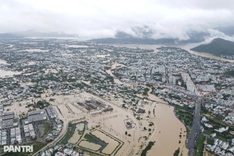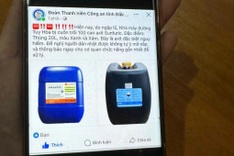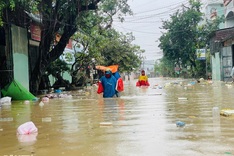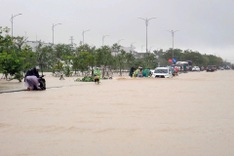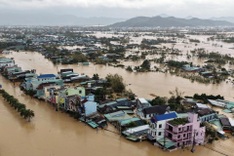There are increasing concerns the prolonged vaccine shortage may soon lead to the resurgence of infectious diseases in Vietnam.
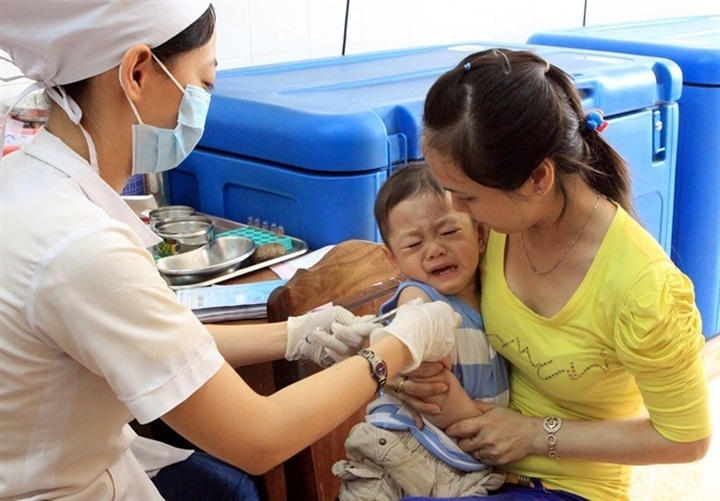
This comes as the vaccination rate for the Expanded Programme on Immunisation (EPI) fell short of the annual targets last year.
In 2022, only three out of 20 provinces and cities in the southern region achieved the full vaccination rate for children under one year old, and the overall vaccination rate for the region reached only 79.5 per cent due to the vaccine shortage in the EPI.
According to Hoàng Ngọc Mai, thanks to reserves, vaccines were still adequately supplied in the early months of 2022. However, by mid-2022, the supply was not quickly replenished, leading to a shortage of a number of vaccines nationwide for diseases such as measles, DPT (diphtheria-pertussis-tetanus), measles-rubella (MR) and polio (bOPV).
To cope with the shortage, the Institute of Vaccines and Medical Biologicals, the Centre for Research and Production of Vaccines and Medical Biologicals sponsored 328,280 doses of DPT vaccine and 200,000 doses of measles vaccine to the programme, helping to meet the demand for a month.
But shortage has recurred and persisted since then. Due to the lack of vaccines, in 2022, most of the vaccination rates in the EPI did not reach the annual target and had been lower than the 2021 rates.
In the southern region, 14 provinces had vaccination rates below 80 per cent, such as Đồng Nai, Tiền Giang, Lâm Đồng, Tây Ninh, Cần Thơ, Sóc Trăng, An Giang, Trà Vinh, Đồng Tháp, Bình Phước, Kiên Giang, Cà Mau, Bạc Liêu and Hậu Giang.
The catch-up vaccination rate in the southern region was also very low. In 2022, only 16 out of 20 provinces implemented catch-up vaccination, with 338,026 doses administered.
In the first quarter of 2023, only 18 provinces and cities conducted catch-up vaccinations, with 123,498 doses administered. This number is very low compared to the number of children that are in need of catch-up vaccination and does not significantly change the vaccination rate in the region.
Risk of infectious disease outbreaks
Mai said that the low vaccination rate puts Vietnam at risk of large-scale outbreaks of infectious diseases. She noted that the World Health Organization has classified the risk of polio returning to Vietnam from the lowest level to a medium-high level.
Dương Thị Hồng, Deputy Director of the National Institute of Hygiene and Epidemiology (Ministry of Health) and Head of the National Expanded Programme for Immunisation Office, said that currently, most provinces have run out of the 5-in-1 DPT-VGB-Hib vaccine against diphtheria, whooping cough, tetanus, hepatitis B, and haemophilus influenzae type b (Hib).
Some vaccines are in very limited supply and only enough for use until July 2023, such as DPT, tuberculosis (BCG), pertussis (DTaP), and measles-rubella vaccines.
Meanwhile, the polio vaccine supply is sufficient until August 2023. The EPI has compiled all vaccine needs from localities and submitted them to the Ministry of Health.
Hồng said that the health ministry is making efforts to restore the vaccine supply for the programme. The ministry will establish a common price framework for imported 5-in-1 vaccines, and localities will quickly sign contracts with manufacturers based on actual needs, after obtaining results of procurement through bidding or price negotiation according to regulations, quickly sign the contract to receive the vaccine. This method is similar to what the Department of Health has done to buy some drugs.
"In June, the ministry will issue an official document requesting the quantity of orders," she said.
"Localities must have an accurate figure of the required vaccine quantity to avoid situations of excess or shortage compared to the demand."
HCM City is one of the localities affected by the disruption of vaccine supply in the EPI due to a large number of children in the vaccination age group.
According to the city’s Department of Health, the shortage of vaccines for EPI started in May 2022 and has continued until now.
Despite sending multiple recommendation letters to the health ministry, the quantity of supplied vaccines has not been sufficient to meet the vaccination needs of young children in the area.
According to the projection of the Department of Health, from now until June 2024, HCM City needs approximately 1,553,000 doses of various vaccines in the EPI.
The EPI is providing immunisation to 10 vaccine-preventable diseases in Vietnam.
It is estimated that EPI has saved 42,000 lives and prevented more than 6.7 million childhood diseases like polio, tetanus, diphtheria, measles and pertussis with high vaccine coverage.
Cubersome procedures slow down supply
Nguyễn Đăng Hiền, the Director of the Centre for Research and Production of Vaccines and Medical Biologicals, which is currently responsible for producing and supplying four types of vaccines for the EPI (including bOPV, measles, and measles-rubella), said that in previous years, there was no shortage of vaccines because the centre would usually produce a certain surplus quantity of vaccines for future years, even without specific plans or orders.
However, in the past two years, due to changes from the health ministry, the centre no longer produces a surplus but manufactures vaccines based on specific orders.
Recently, the centre received a document from the health ministry regarding the proposal of pricing plans, which will be submitted to the ministry for approval.
Based on the approved prices by the health ministry, the EPI will sign a joint contract to purchase vaccines, and provinces and cities will place specific orders with the manufacturers accordingly.
However, in order to accomplish this, the manufacturer needs an accurate quantity to determine the vaccine price and forecast the raw materials for production planning.
In addition to the quantity, localities need to provide the manufacturer with the delivery schedule, such as how many times a year they will receive shipments and when they will receive them, so that the company can have appropriate production plans.
"The vaccine supply is not something that can be instantly fulfilled, we need to have a plan to prepare for purchasing raw materials. Only with accurate forecasting and ordering can we ensure the domestic vaccine supply," said Hiền.
Agreeing with this, Trần Thanh Hiếu, Deputy Director of the state-owned Company for Vaccine and Biological Production No.1 (VABIOTECH), said that the health ministry and the EPI need to be proactive in placing orders so that companies can be proactive in production and supply.
Hiếu said, like the Centre for Research and Production of Vaccines and Medical Biologicals, in previous years, VABIOTECH had produced a certain quantity of vaccines for stockpiling, ready to supply when needed. However, due to various objective conditions, the unit is currently unable to produce a large quantity.
Therefore, if the health ministry and localities have plans and place orders early, the enterprise can respond in a timely manner.
"To ensure a steady and sustainable supply, it is necessary to have a long-term plan, at least two years, so that the entire programme, manufacturers, and users can be proactive," said Dương Hữu Thái, Director of the Institute of Vaccines and Medical Biologicals (IVAC), which has provided four types of vaccines for the EPI.


